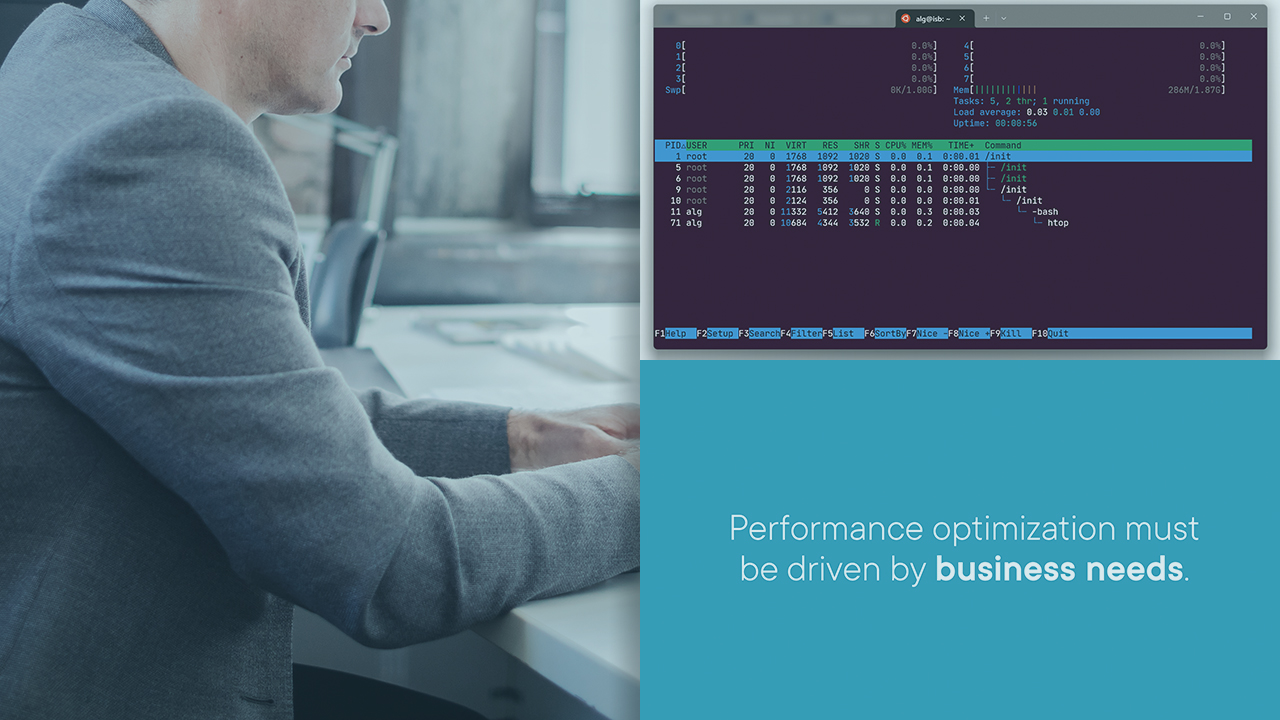
How to Monitor and Improve Your .NET 6 Application Performance
.NET 6 is the latest version of Microsoft’s open-source and cross-platform development platform for building applications that run on Windows, Linux, macOS, and mobile devices. .NET 6 brings many improvements and new features to help developers create faster, more reliable, and more secure applications.
One of the key aspects of developing high-quality applications is performance monitoring. Performance monitoring is the process of measuring and analyzing how your application behaves under various conditions, such as load, concurrency, latency, memory usage, CPU utilization, etc. Performance monitoring can help you identify bottlenecks, errors, resource leaks, and other issues that affect your application’s functionality and user experience.
However, historically .NET had a mixed bag of methods to monitor application performance. A lot of them were Windows-only and some required expensive third-party tools.
In this course, Performance Measuring and Monitoring for .NET 6 Applications, you’ll learn to appreciate .NET 6’s focus on open standards, cross-platform approach, and openness in their monitoring design.
First, you’ll explore the basic theory of performance monitoring and what .NET 6 can do for you out of the box.
Next, you’ll discover in detail how .NET SDK gives you necessary tools to trace local application code and distributed microservices, all for free and out of the box!
Finally, you’ll learn how to integrate your applications with third-party Application Performance Monitoring solutions to understand how to enable it in production.
When you’re finished with this course, you’ll have the skills and knowledge of performance monitoring needed to understand your code and have a live picture in front of you of how it can be optimized even further.
What You Will Learn
- The benefits and challenges of performance monitoring
- The difference between metrics, logs, traces, dumps
- The concepts of observability and distributed tracing
- How to use dotnet monitor tool to collect diagnostics artifacts
- How to use dotnet trace tool to capture traces
- How to use dotnet counters tool to capture metrics
- How to use dotnet dump tool to capture dumps
- How to use BenchmarkDotNet library to benchmark your code
- How to use OpenTelemetry library to instrument your code
- How to use Jaeger or Zipkin as distributed tracing backends
- How to use Prometheus or Grafana as metrics visualization tools
- How to use Application Insights or New Relic as APM solutions
Original Description
Historically .NET had a mixed bag of methods to monitor application performance. A lot of them were Windows-only and some required expensive third-party tools.
In this course, Performance Measuring and Monitoring for .NET 6 Applications, you’ll learn to appreciate .NET 6, focus on open standards, cross-platform approach, and openness in their monitoring design.
First, you’ll explore the basic theory of performance monitoring and what .NET 6 can do for you out of the box.
Next, you’ll discover in detail how .NET SDK gives you necessary tools to trace local application code and distributed microservices, all for free and out of the box!
Finally, you’ll learn how to integrate your applications with third-party Application Performance Monitoring solutions to understand how to enable it in production.
When you’re finished with this course, you’ll have the skills and knowledge of performance monitoring needed to understand your code and have a live picture in front of you of how it can be optimized even further.
To contact me, send an email anytime or leave a comment below.
